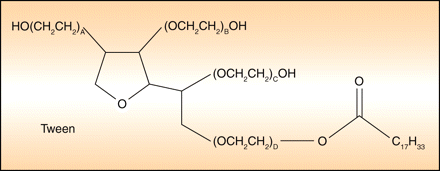Sites of interest on the World Wide Web—edited by David Roman
Industrial Strengths

In this issue of MI, Seabrook and colleagues write on the next generation of Alzheimer disease medications in varying stages of development. Although we can often keep track of our colleagues’ research in an academic setting, keeping current on the research going on in industrial settings is more challenging. One Web site, Drug Development Technology (http://www.drugdevelopment-technology.com/projects/), provides a gateway to research and novel developments from industrial sources. The Web site contains sections on anti-infective, cardiovascular, CNS, gastrointestinal, metabolic, musculoskeletal, oncology, and respiratory therapy developments. The pages provide links, mechanistic information, and concise illustrations of how these new therapies work, and they provide an outstanding opportunity to see what might be appearing on the pharmacy shelves in the near future. See also a page on commercial applications of specific reagents, research tools, and machinery in the White Papers section (http://www.drugdevelopment-technology.com/downloads/whitepapers/). Some of these tout products from specific companies trying to promote their goods; nonetheless, most of these articles are worth your time to peruse. At the moment, the White Paper section is underpopulated, but it is likely that more entries will appear in the near future. From matrix-assisted laser desorption/ionization (MALDI) tissue imaging to the identification of expressed biomarkers and the use of orphan drugs, the White Papers section will cover a wide range of topics.
A Collection of Blogs


We have featured individual blogs in the Net Results section of Molecular Interventions before, but the Web site ScienceBlogs (http://scienceblogs.com) offers a unique site for both popular and research-related science news.
One recent posting, at the Retrospectacle blog by University of Michigan graduate student Shelley Batts, discusses the components of cone snail venoms and is spiced with some philosophical musings as well (http://scienceblogs.com/retrospectacle/2007/08/snail_venom_contains_painrelie.php). See also a recent post by Mark Hoofnagle, an MD/PhD candidate at the University of Virginia, at the Denialism blog. Mark laments the demise of the Office of Technology Assessment (OTA) (http://science-blogs.com/denialism/2007/09/bring_back_the_ota_bring_back.php), which “worked for the legislative branch and provided non-partisan scientific reports relevant to policy discussions.” Mark is interested in denialism, which “concerns the use of denialist tactics to confuse public understanding of scientific knowledge.”

The blogs warehoused at ScienceBlogs offer a range of commentary from scientific findings to funding issues to job searching and an array of other relevant topics of interest to students and professionals. Two things make most of the blogs particularly interesting: many are authored by graduate students, and many contain commentary sections that spur interesting discussions.

The Brij® Be-Tween® Us

Dr. Shaun Black’s page—Properties of Detergents (Amphiphiles)http://psyche.uthct.edu/shaun/SBlack/detergnt.html-at the University of Texas Health Center at Tyler reviews detergents and their properties. Whether your interests are zwitterionic, ionic, or non-ionic detergents, this Web site should slake the desires of most micelle-making scientists. This reference is sure to be useful to researchers dealing with protein purification, especially of membrane-bound proteins. The handy tables include purity information, critical micellar concentrations, molecular weights of micelles, and aggregation numbers.
- © American Society for Pharmacology and Experimental Theraputics 2007




